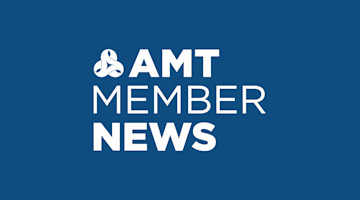Recently on IMTS spark, Dave Leone, Director of Engineering, Dimensional Control at GE Appliances (GEA), sat down with Robert Schoenberger, Editor, Today’s Motor Vehicles, to discuss the digital transformation that happened at GEA when they embraced 3D scanning and digitization and the doors it opened to new processes, efficiencies, and opportunities.
In 2015, GEA had the opportunity to benchmark itself against the automotive industry and take a deep dive into the digital engineering tools and processes that these companies use every day and have used for decades. They realized that their processes were largely antiquated and learned about not only digital engineering but dimensional management and its benefits – improved product quality, reduced costs, optimized part tolerances, robust assembly processes, and control of manufacturing variation. GEA laid out a roadmap of how they wanted to evolve digitally. Leone took us through their journey, comparing GEA’s legacy method of doing things with how they have changed.
“Don’t think of a scanner as a different way of measuring; think of it as a digitizer,” said Leone.
Their first step was digital product definition, and Leone discussed how linear dimension definition compares to GD&T (geometric dimensioning and tolerancing)-based product definition, explaining key points with strong visual graphics and examples. This allowed GEA to replace PDF drawings and CAD models with digital (machine readable) product manufacturing information (PMI), which they then used downstream in other applications such as analytics, cost estimation, and inspection applications. For example, they could autogenerate production part approval process (PPAP) reports, and data could be integrated seamlessly into tolerance analysis software, 3D metrology software, authority viewable software, and metrology software. The downstream integration created even greater efficiencies and value because problems could be identified and fixed more quickly, ultimately leading to faster times to market. And the machine-readable PMI opened the door to the digital thread.
Leone also discussed how they got management on board with these changes. GEA started with 3D scanning, then learned how to annotate in 3D, slowly building credibility and momentum before transitioning into GD&T. His advice is to start small in a few pilot areas – “winning by doing.”
He went on to discuss and illustrate the evolution of digital design validation at GEA and looked at tolerance analysis, again comparing their legacy method with their current process. He discussed the evolution of digital metrology, model-based definition (MBD) inspection and reporting, and automated production control and inspection. He ended his presentation with many examples of how digitization through 3D scanning transformed almost all their key processes, including digital assembly, build verification, part qualification, assembly inspection, equipment verification, reverse engineering, and tool qualification.
For more information or to view this session on demand, simply log on to IMTS spark and search for the title or click here.






